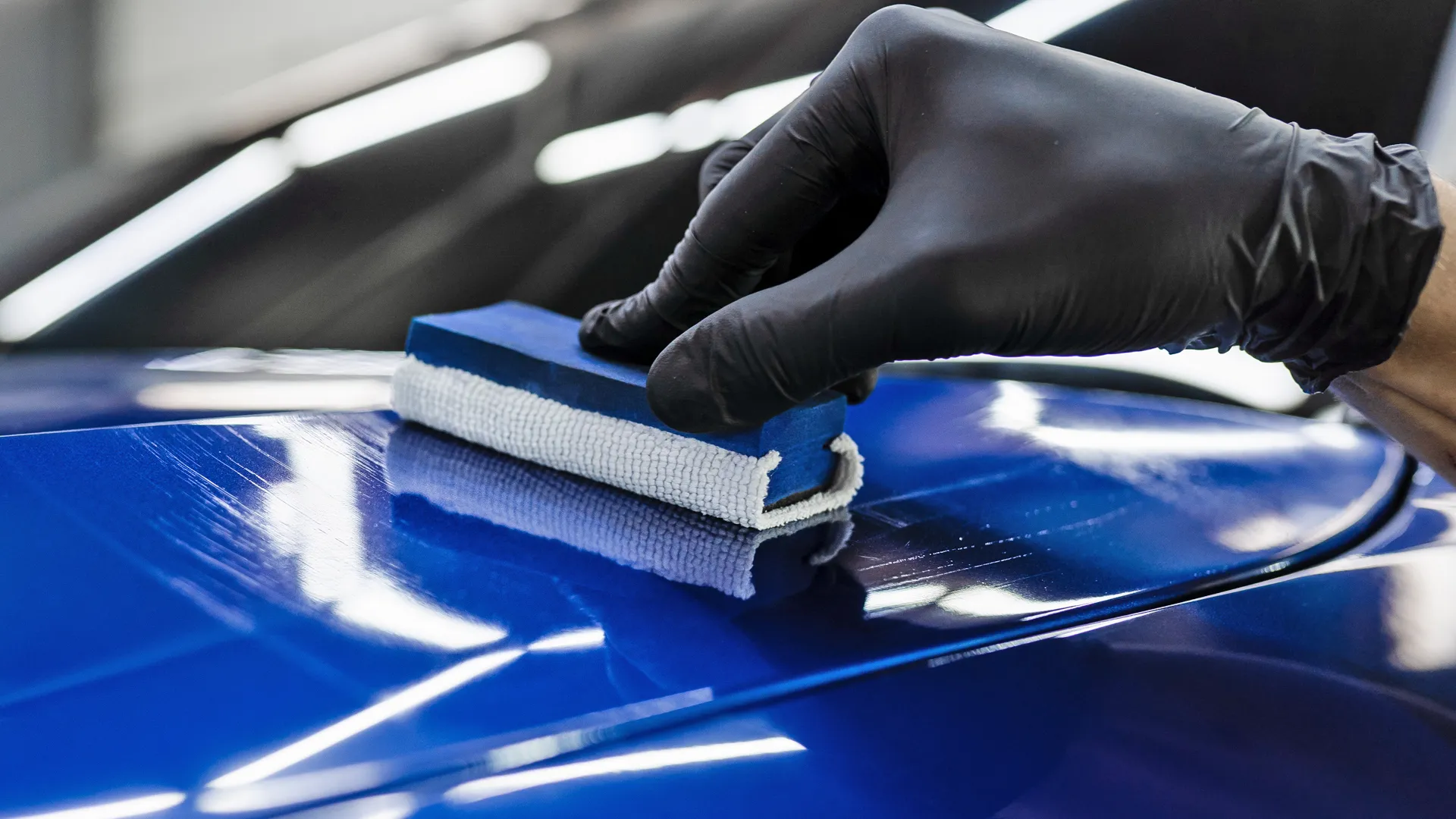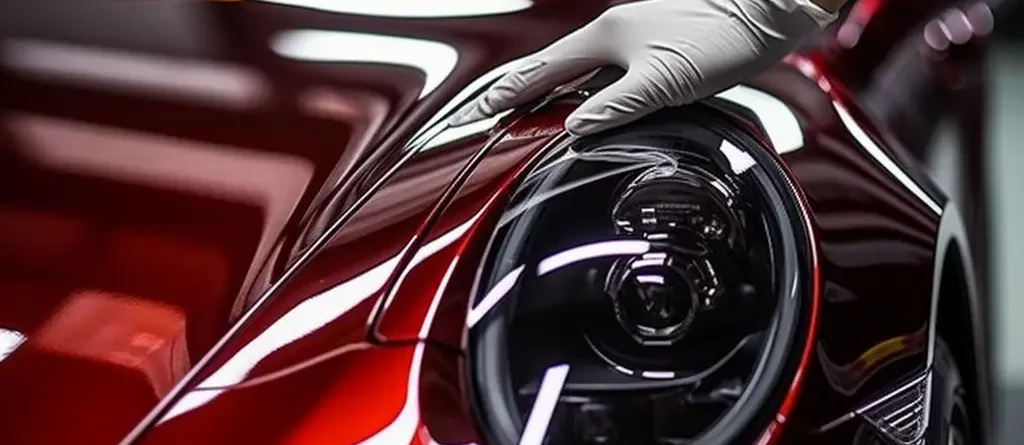Ceramic Coating vs Traditional Wax: Which Offers Better Protection?
Ceramic Coating vs Traditional Wax: Which Offers Better Protection?
Blog Article
Ceramic Finish vs. Conventional Wax: Which Offers Much Better Long-Term Security?
The dispute in between ceramic coverings and conventional wax for vehicle defense has garnered significant interest among automotive lovers and experts alike. Ceramic layers flaunt premium long life and resistance to ecological aspects, yet the complexity of their application raises inquiries about access and functionality.
Summary of Ceramic Covering
Ceramic coating has actually obtained significant appeal among automotive fanatics and detailers alike due to its advanced protective qualities. This ingenious innovation is developed to produce a resilient, hydrophobic guard over a vehicle's paint surface, dramatically boosting its resistance to ecological impurities such as dirt, UV rays, and chemical discolorations. Unlike conventional wax, which supplies a short-lived layer of security, ceramic finishes bond at a molecular degree with the paint, providing resilient durability-- frequently expanding beyond two years with correct upkeep.
The application procedure involves thorough preparation of the automobile's surface, consisting of cleansing and brightening to make sure ideal adhesion. As soon as used, the finishing remedies to develop a robust layer that not only adds depth and gloss to the paint but additionally streamlines maintenance. With its hydrophobic buildings, ceramic finishing permits water and dirt to glide off even more quickly, decreasing the frequency of washes and lessening the danger of swirl marks.
Moreover, ceramic coatings are available in different formulas, permitting users to choose products customized to their details demands and preferences. Overall, ceramic finish represents a considerable development in paint protection modern technology, providing superior performance compared to conventional alternatives.
Overview of Typical Wax
Generally considered as a staple in automotive care, wax serves as a prominent choice for those looking for a straightforward technique to boost and secure their car's paint - ceramic coating. Automotive wax usually comprises natural active ingredients, such as carnauba, or synthetic substances, made to produce a protective layer externally of the paint. This layer not just improves the car's gloss and beam but also supplies an obstacle versus environmental impurities
The application of wax is generally user-friendly, making it available for both specialists and Do it yourself enthusiasts. When applied, wax requires a treating duration, after which it solidifies to create a protective covering.
Nonetheless, while wax is reliable for enhancing the visual allure of a car, it is necessary to keep in mind that the protection it uses may demand much more constant reapplication compared to alternate products, such as ceramic layers. In general, typical wax remains a favored alternative for those focusing on ease of usage and instant visual renovation.
Toughness and Longevity Contrast
While both ceramic coatings and typical wax offer safety advantages for auto paint, their toughness and longevity differ dramatically. Typical wax, usually made from natural carnauba or synthetic polymers, typically gives a safety layer that lasts roughly three to 6 months. This reasonably short life expectancy demands normal reapplication to maintain optimal protection.
In comparison, ceramic finishings are crafted from innovative nanotechnology, creating a covalent bond with the paint surface. This causes a robust, hydrophobic layer that can sustain for two to five years, depending on the item and environmental conditions. The superior sturdiness of ceramic coverings is credited to their chemical structure, which supplies boosted resistance to scratches, UV rays, and oxidation.

Protection Versus Environmental Variables
Protecting a car's paint from ecological aspects is crucial for keeping its appearance and worth in time. Vehicles are frequently exposed to a range of aspects, consisting of UV rays, bird droppings, tree sap, acid rainfall, and roadway grime, every one of which can jeopardize the stability of the paintwork.
Ceramic finishes supply a robust protection versus these ecological assailants. Unlike typical wax, which can weaken swiftly under UV direct exposure, ceramic finishes form a resilient, hydrophobic layer that resists the damaging results of sunshine and ecological contaminants. This innovative technology produces a chemical bond with the lorry's surface area, providing exceptional protection that lasts for many years, even in harsh conditions.
Traditional wax, while less complicated to apply, typically calls for frequent reapplication and offers restricted resistance to pollutants and UV rays. Over time, it can damage down, leaving the paint susceptible to scratches and oxidation. On the other hand, ceramic finishings keep their safety qualities much longer, significantly lowering the danger of paint damages and guaranteeing that the lorry maintains its aesthetic appeal. Because of this, ceramic finishings are significantly recognized as the superior option for long-lasting security versus environmental elements.
Application and Maintenance Distinctions
The methods of application and succeeding upkeep for ceramic finishes and traditional wax differ significantly, affecting the overall customer experience and effectiveness of each product. Ceramic finishes require a more complex application procedure, usually entailing surface prep work that consists of cleaning, decontaminating, and brightening the lorry. When the surface area is prepared, the ceramic layer is used in a controlled environment, usually requiring expert experience to guarantee proper healing and bonding to the paint.

While both items enhance car look, the longer-lasting protection provided by ceramic finishings might justify their preliminary financial investment, despite the more demanding application process. Conversely, conventional wax continues to be a prominent option for those seeking a less complex, albeit temporary, option.

Conclusion
Finally, ceramic coatings show considerable benefits over typical wax in regards to toughness and environmental management. With a life expectancy expanding 2 to 5 years and premium resistance to UV rays, dust, and chemical stains, ceramic layers supply an extra effective option for long-term automobile upkeep. Although the application process may need specialist competence, the resulting expense financial savings and minimized frequency of reapplication highlight the value of ceramic finishes for those looking for ideal vehicle security.
The discussion between ceramic finishings and traditional wax for vehicle defense has garnered considerable attention among automotive lovers and specialists alike. Unlike typical wax, which provides a short-lived layer of defense, ceramic you could try this out coverings bond at a molecular level with the paint, offering resilient durability-- commonly extending beyond two years with click here to find out more correct upkeep.
While both ceramic layers and typical wax offer protective advantages for vehicle paint, their longevity and long life vary substantially. For automobile lovers seeking long-term defense, ceramic finishes offer an engaging advantage over conventional wax products.
In final thought, ceramic layers demonstrate significant advantages over typical wax in terms of toughness and ecological defense.
Report this page